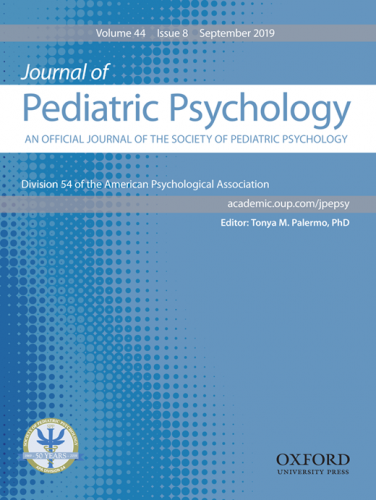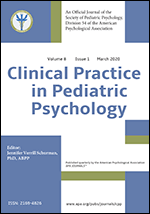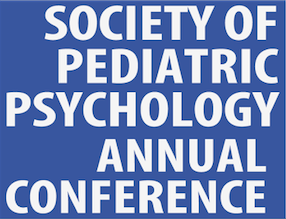Fact Sheet: Epilepsy in Children and Adolescents
Epilepsy is a common neurological condition diagnosed by one of the following: At least two unprovoked (or reflex) seizures occurring over 24 hours apart; one unprovoked (or reflex) seizure plus a probability of further seizures occurring over the next 10 years; or diagnosis of an epilepsy syndrome. Seizures can occur in one specific area of the brain (i.e., focal) or in both hemispheres of the brain (i.e., generalized). The primary treatment for epilepsy is antiepileptic drugs; other treatment options include surgery, low carb diets (e.g., ketogenic), vagus nerve stimulation, and responsive neurostimulation. Epilepsy is resolved for individuals who had an age-dependent epilepsy syndrome but are now past the applicable age or those who are seizure-free for 10 years, with no seizure medicines for 5 years.
Prevalence and Course
About seven out of 1000 children worldwide currently have epilepsy. Seizures can be caused by fevers, brain trauma, and genetic/brain abnormalities; for most youth with epilepsy (YWE) the cause is unknown (i.e., idiopathic epilepsy). Approximately 40% of YWE have medically refractory epilepsy, or continued seizures despite treatment. About 65% of YWE wean from their antiepileptic medications after a 2-year seizure free period and normal EEG.
Health and Psychosocial Consequences
YWE experience neurodevelopmental disorders (ADHD, autism, intellectual disability), internalizing (anxiety and depression) and externalizing disorders, learning difficulties, and suicidal ideation/completion at a higher rate (34%) compared to same aged peers and other pediatric conditions. Reasons include side effects of medications/treatments, lifestyle changes, and the neurobiological underpinnings of epilepsy. Identification and management of behavioral health comorbidities is integral to comprehensive epilepsy treatment due to their significant impact on health related quality of life (HRQOL). Another psychosocial concern poor adherence, with over half of YWE reporting non-adherence in the first month after diagnosis. Non-adherence is associated with increased seizures, unnecessary use of medical resources, and increased risk of Sudden Unexpected Death from Epilepsy. YWE and their families report reductions in HRQOL from managing activity restrictions, presence of co-occurring emotional/ behavioral/academic concerns, and lack of knowledge of seizures by members of the community.
Evidence-based Assessment
Neuropsychological assessments are recommended for YWE to better understand the impact of seizures/treatment on memory, processing, cognition, etc and are important for pre-surgical evaluations. Children with developmental and learning delays may benefit from neurodevelopmental assessments. The American Academy of Neurology (AAN) recommends routine screening of psychiatric/behavioral disorders in YWE. Use of empirically-supported assessment measures related to emotional and behavioral functioning (e.g., Neurological Disorders Depression Inventory-Epilepsy for Youth; NDDI-E-Y), adherence, health-related QOL (e.g., PedsQL Epilepsy Module), and family functioning is considered best practice for YWE.
Culture, Diversity, Demographic and Developmental factors
Epilepsy is slightly more prevalent in males compared to females and tends to increase with age. Children under 2 years of age and children from lower-income families are at highest risk for epilepsy. A national survey found 66% of children with a current or previous diagnosis of epilepsy were white non-Hispanic, 13% white Hispanic, 11% black, and 9% multi/biracial/other. Transition to adult healthcare is complicated in epilepsy based on range in age of diagnosis, different epilepsy care models in pediatric vs. adult care, and developmental disorder comorbidities for many YWE.
Evidence-based Interventions
Cognitive-behavioral treatment (e.g., parent-based behavior management, problem-solving, behavioral relaxation training, and cognitive reframing) targets behavioral health symptoms common in YWE (e.g., internalizing, behavior) and epilepsy self-management. Use of these behavioral health interventions have shown improvements in adherence to medications, QOL, and reduced internalizing symptoms in YWE. However, additional research is needed in this area, particularly to develop and examine the benefit of mHealth interventions. Given the high rate of neurodevelopmental and learning comorbidities associated with pediatric epilepsy, it is important to consider individual abilities when providing behavioral health interventions to YWE and adapt interventions as needed.
Resources
- Handouts on anxiety, depression, and PNES in children and youth with epilepsy
- Information on self-management programs in epilepsy, the Managing Epilepsy Well Network
- Patient and professional resources from the Epilepsy Foundation Wellness Institute
-
American Academy of Pediatrics Epilepsy & Comorbidities (ECHO)
Authors: Avani Modi, PhD, and Aimee Smith, PhD
Date of last update: July 2020
References
- Fiest, K. M., Sauro, K. M., Wiebe, S., Patten, S. B., Kwon, C. S., Dykeman, J., ... & Jetté, N. (2017). Prevalence and incidence of epilepsy: a systematic review and meta-analysis of international studies. Neurology, 88(3), 296-303.Fountain NB, Van Ness, PC, Bennett A, et al. Quality improvement in neurology: Epilepsy Update Quality Measurement Set. Neurology 2015: 84:1483-1487.
- Guilfoyle SM, Wagner JL, Modi AM, Junger KA, Barrett L, Riisen A, Schoffner K, Smith A, & Weyand C. (2017). Pediatric epilepsy and behavioral health: The state of the literature and directions for evidence-based interprofessional care, training, and research. Clinical Practice in Pediatric Psychology, 5, 79-90.
- Michaelis R, Tang V, Wagner JL, Modi AC, LaFrance WC, Goldstein LH, Lundgren T, & Reuber M. (2017). Psychological treatments for people with epilepsy. Cochrane Database System Review. Oct 27;10:CD012081. doi:10.1002/14651858.CD012081.pub2.
- Michaelis R, Tang V, Wagner JL, Modi A, LaFrance WC, Goldstein LH, Lundgren T, & Reuber M. (2018). Cochrane systematic review and meta-analysis of the impact of psychological treatments for people with epilepsy on health-related quality of life. Epilepsia; 59, 315-332.
- Michaelis R, Tang V, Goldstein LH, Reuber M, LaFrance WC, Lundgren T, Modi AC, Wagner JL. (2018). Psychological treatments for adults and children with epilepsy: Evidence based recommendations by the ILAE Psychology Task Force. Epilepsia, 59, 1282-1302.
- Modi A, Guilfoyle S, Wagner JL,. (2017). Epilepsy. In M Roberts and R Steele (Eds). Handbook of pediatric psychology, 5th Ed. New York, NY: Guilford Press.
- Modi, AC, Junger, KF, Mara, CA, et al. (2017) Validation of the PedsQL Epilepsy Module: A pediatric epilepsy-specific health-related quality of life measure. Epilepsia, 58(11):1920-1930.
- Modi AC, Wagner JL, Smith AW, Kellermann T, & Michaelis R. (2017). Review and guide for the implementation of behavioral clinical trials in epilepsy. Epilepsy & Behavior, 74, 104-113.
- Mohanraj R, Brodie M. Diagnosing refractory epilepsy: response to sequential treatment schedules European journal of neurology. 2006;13(3):277-282.
- Russ, S.A., Larson, K., & Halfon, N. (2012). A national profile of childhood epilepsy and seizure disorder, Pediatrics, 129, 256-263.
- Smith G, Wagner JL, Edwards J. (2015). Part 2- Nursing care and evidence-based Treatment. American Journal of Nursing, 115, 6, 34-44.
- Smith G, Wagner JL, Edwards J. (2015). Epilepsy update, Part 1: Refining our understanding of a complex disease. American Journal of Nursing, 115, 5, 40-47.
- Wagner, JL, Kellerman, T, Mueller, M, et al. (2016) Development and validation of the NDDI-E-Y: a screening tool for depressive symptoms in pediatric epilepsy. Epilepsia, 57(8):1265-1270.
- Wagner JL, Modi A, Johnson E, Shegog R, Escoffery C, Bamps Y, Austin J, Schultz R, Mapel Lentz S, Smith G. (2017). Self-management interventions in pediatric Epilepsy: What is the level of evidence? Epilepsia, 57, 743-754.



